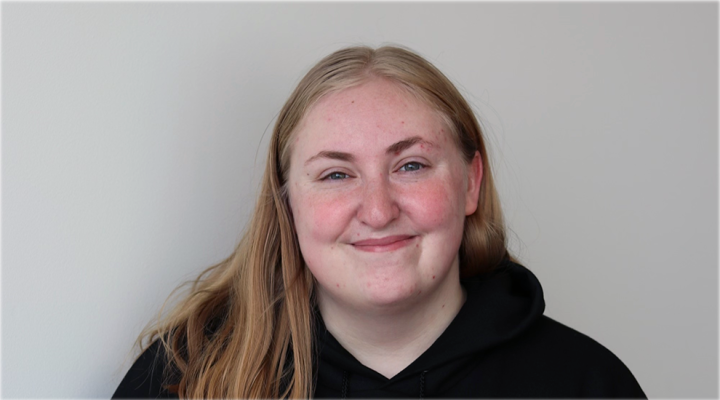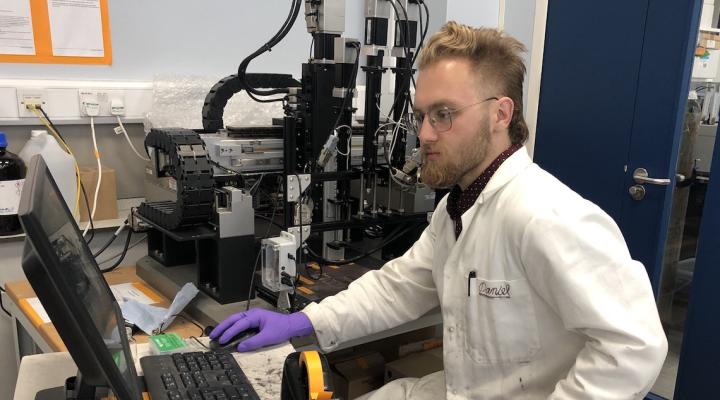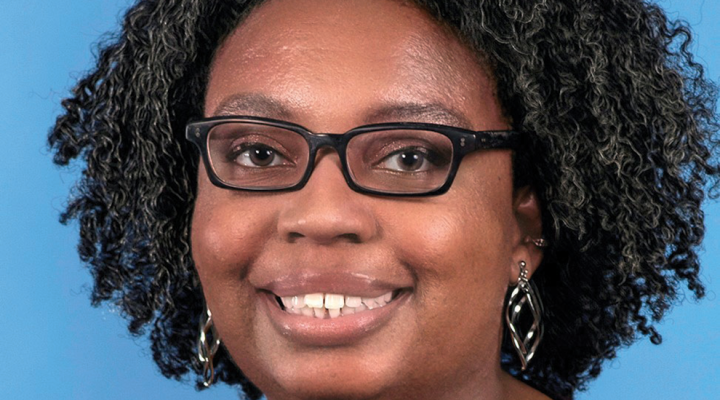New technology and increasing improvements to design and installation have made electric heat pumps one of the most efficient and cost-effective alternatives to traditional gas heating systems. Heat pumps are growing in popularity and are an important piece of the emission-reduction puzzle.
Emily Carr ’21, a mechanical engineering major in the Cornell Sibley School of Mechanical and Aerospace Engineering, is working to identify problem areas with residential heat pumps that cause energy inefficiencies. Identifying these inefficiencies helps scientists make electric heat pumps even more sustainable.
Carr is working with Max Zhang, professor in the Sibley School, and Zach Lee, a Ph.D. student in Professor Zhang’s group, to identify whether heat pumps in the Northeast United States are properly sized, whether they are using excess amounts of inefficient backup heat, and what effect that has on a grid-level scale. Carr analyzes the Ecobee “Donate Your Data” dataset which contains residential heating system operating data from smart thermostats around the country.
Ecobee manufactures and sells smart thermostats that are designed to conserve energy without compromising comfort. The company then connects homeowners with scientists through Donate Your Data to improve how energy is used. This data gives researchers like Carr, Lee and Zhang useful information from over a hundred thousand residential buildings from across the United States.
From the data, Carr was able to estimate the relative sizing of a heat pump by looking at how often it cycles. An oversized heat pump will have many short cycles, since it’s powerful enough to heat a room quickly, then turn off when the room hits the desired temperature.
“The process of starting up the heat pump is energy inefficient,” says Carr. “In an ideal situation, a “properly sized” heat pump would operate constantly on “design days” (the coldest 1% of the year) and be the most energy-efficient.”
Early in the project, Carr ran into problems determining whether heat pumps were oversized with the available data. Zhang’s and Lee’s mentorship was essential in identifying ways around this.
“Because of Professor Zhang’s thought-provoking, open-ended questions about our methods, results, and implications, I was able to find some things that went beyond the scope of the initial goal,” says Carr. “Through his mentorship, I came to appreciate that running into problems like these is normal, and I certainly learned about overcoming inevitable challenges while doing research.”
“When our first idea turned out to be a dead-end, Emily was able to quickly pivot to another research direction that ended up being much more impactful,” says Lee. Zhang recalled the moment when the team realized the initial goal was not feasible, “I wouldn’t be surprised if Emily decided to give up at that point. Instead, she persevered with a laser focus to find an alternative path. This is the trait I would expect from much more mature researchers than an undergraduate student. It’s so great to have Emily as a member of my lab”.
In addition to conducting research with Professor Zhang in the Energy and Environment Research Lab (EERL), Carr is also a member of the Cornell Varsity Women’s Gymnastics Team. Through this experience, Carr met Lyanda Dudley ’19, a Sibley School alumna and fellow member of the gymnastics team, who made a big impact on her time at Cornell.
“Lyanda is also interested in renewable energy and sustainability, and has helped frame my course of study around that,” says Carr. “Her guidance during my first two years, and still today, has been paramount to my Cornell journey and personal development.”
Carr found that one of the most valuable aspects of her undergraduate experience has been collaborating and interacting with inspirational people she has met in various classes, teams and clubs at Cornell.
After graduation, Carr will be attending UC Berkeley to pursue an MS in Civil and Environmental Engineering with a concentration in Energy, Civil, Infrastructure, and Climate.





